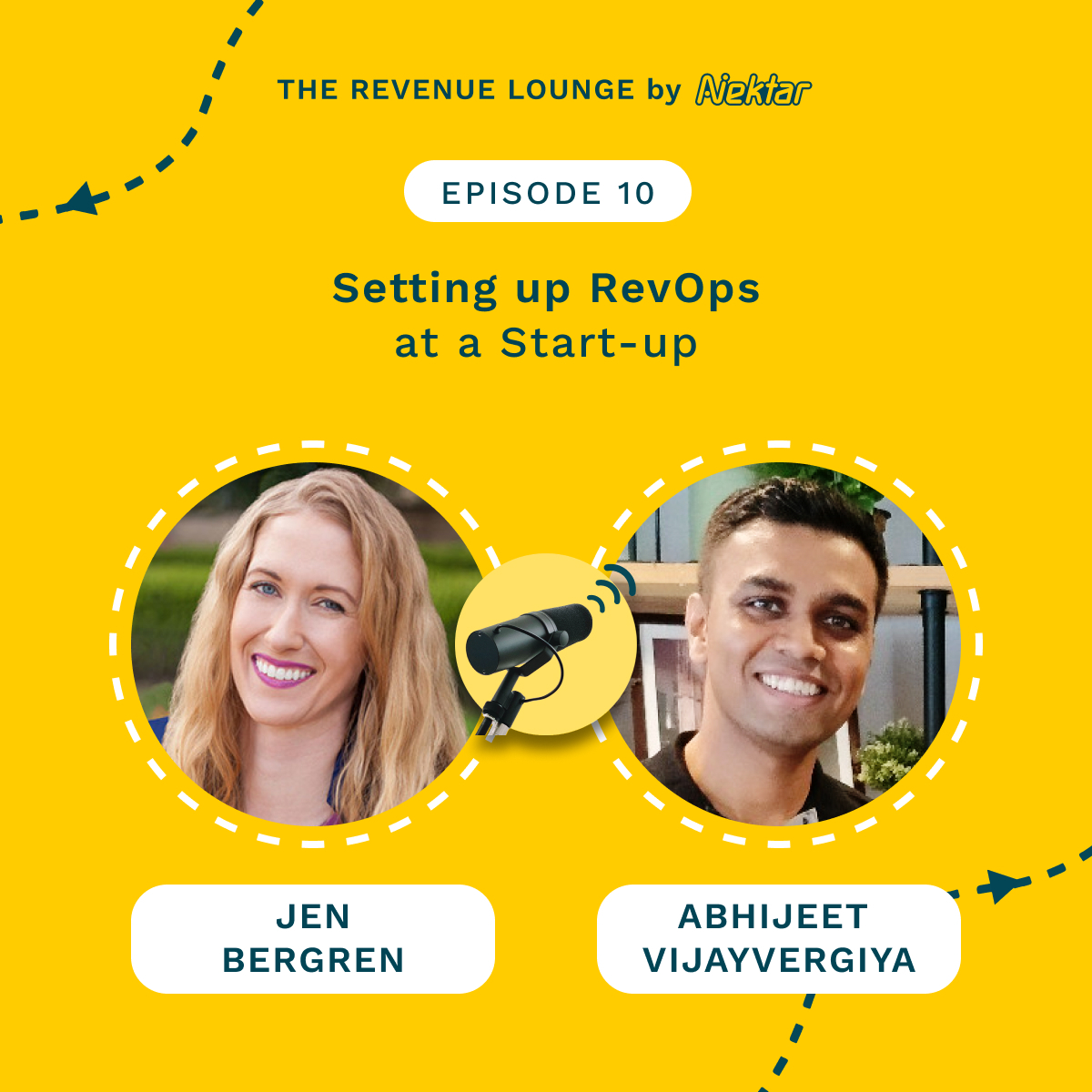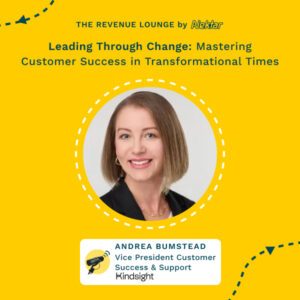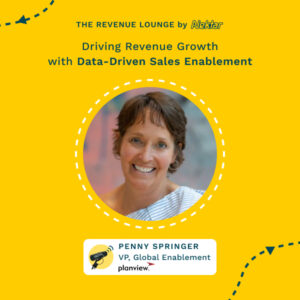Aligning Marketing to Revenue Goals ft. Ken Lempit
February 4, 2025
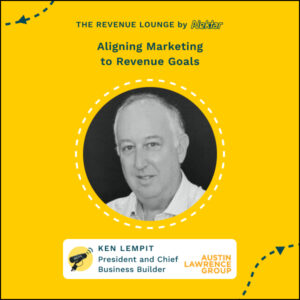
About
The Revenue Lounge
The podcast covers stories from leaders across RevOps, Sales, Customer Success, GTM, Data and Marketing about what drives these functions and what advice they would share with our listeners. With 3 seasons recorded, the podcast currently features 50+ enterprise leaders in the B2B SaaS domain. Tune in to hear from the best in the business
In this episode of The Revenue Lounge, host Randy Likas speaks with Ken Lempit, president and chief marketing strategist of Austin Lawrence Group. They discuss Ken’s extensive background in technology and marketing, the importance of aligning marketing with revenue goals, and the challenges SaaS companies face when trying to grow beyond their initial success. Ken emphasizes the need for C-level executives to adapt to changing market conditions and the evolving role of the CRO in orchestrating revenue across different functions. The conversation also highlights the significance of brand storytelling in differentiating companies in competitive markets. In this conversation, Ken and Randy explore the importance of brand perception, customer fairness, and the shift from traditional marketing metrics like MQLs to a more nuanced understanding of buying groups. They discuss the power of relatable branding, the significance of thought leadership in customer-led growth, and the necessity of adapting marketing strategies to changing buyer behaviors. The conversation also touches on personal insights and passions, emphasizing the importance of authenticity and vulnerability in business.
Takeaways:
Companies often plateau after initial success and need new strategies to grow.
C-level executives must adapt to changing market conditions.
The role of CRO is becoming more prominent in organizations.
Managing change requires honest conversations about different imperatives.
Education is key to aligning marketing and sales efforts.
Analytics can drive better decision-making in revenue strategies.
Brand story is crucial for differentiation in competitive markets.
The head of marketing role may evolve as CROs take on more responsibilities. Having relatable attributes to a brand helps in customer recall.
Brand loyalty often stems from perceived fairness and experience.
Thought leadership is crucial for pricing power in competitive markets.
Customer-led growth is a significant narrative shift in marketing.
Data-driven decision-making is essential for effective marketing strategies.
Adapting to change requires a willingness to test and learn.
Vulnerability and authenticity can be powerful in marketing.
The buying process increasingly occurs outside of company websites.
Content must evolve to support the diverse personas in buying groups.
Personal passions can enhance professional life and decision-making.

Randy Likas (00:02.062)
Hello, everyone. Welcome to another episode of The Revenue Lounge. I’m your host, Randy Likas. And today, I have the pleasure of talking to Ken Lempit, who is the president and chief marketing strategist for Austin Lawrence Group. Austin Lawrence is a strategic marketing advisory and growth services agency specializing in helping SaaS companies grow and achieve their next level of success. Ken, welcome to the show, and thanks so much for joining me today.
Ken (00:24.93)
Hey, Randy, thank you and thanks for the opportunity to join you here.
Randy Likas (00:29.636)
Yeah, I’m looking forward to the conversation. So Ken, I usually like to start with just having you share a little bit about your background and career. What led you to Austin Lawrence? What did you do prior? And maybe a little bit of work, a little bit on the work that Austin Lawrence does for your clients.
Ken (00:49.39)
Sure. So I had worked at two of the biggest companies on the planet before getting into the agency business. So I started at IBM and Citibank and I was both in technology for both of these companies and in sales roles. And I’d watched both of them struggle through big downsizing motions. And my dad actually had a small agency that at the time was called AdTech.
He said, hey, why don’t you come join me? And in order to make that possible, I had to go get some clients because the business was too small to pay me. So I had made some great relationships with service providers at Citi, and a couple of those folks became my first clients. I joined my dad, and for about 11 years we worked together. And then I bought the business from him and have taken it from there.
It’s been about 36 years beginning in January that I’ve been working primarily with technology companies, helping them shape their business strategy, go to market strategy and drive to an outcome, whether that’s an exit or to become an acquirer themselves.
Randy Likas (01:51.833)
Wow.
Randy Likas (02:08.932)
That’s great. And I didn’t realize that you were with your dad before. So that’s a really interesting story. I was doing some prep and some research for our conversation. And I noticed on your LinkedIn that you have something that you say, you that you work under a ring the bell mentality when it comes to B2B marketing. Tell me more about what you mean by that.
Ken (02:33.326)
Well, there are probably not too many surviving marketers that aren’t revenue focused, but I think that we labor under a reputation that sometimes marketing is done for marketing’s reasons as opposed to go to market alignment, go to market support. So I wanted to make clear to people that don’t know who I am that we’re going to start with how do we get to revenue?
as an organization and what is marketing’s role in greasing the skids there? Because ultimately, think effective go to market means that sales marketing and success are kind of playing from the same playbook, reaching for the same goals, and we’re doing it together, not apart. we also used to have a really nice ship’s bell when we had offices in downtown Stanford. we would, in fact, ring the bell.
Randy Likas (03:28.44)
Yeah, yeah, I’ve worked in virus as well. We closed the deal, we’re in the bell. A lot of fun. So, so can you and I actually met a couple of months back at a dinner that you all hosted in Chicago with I think we had about 20, 25 go to market leaders at the dinner. And before the we kind of sat down and had the dinner, you and I had a really great one on one conversation. And we were talking about how, you know, companies
are successful and they kind of get to a certain point of success, whether that be a revenue target or, but things start to plateau a little bit, right? And so a lot of times they get sort of at a point where maybe it’s a new funding round, maybe like I said, the growth has plateaued and they need to get to that next level. There’s been maybe a leadership change at the C level.
And many of the time these companies need to do something different to get to that next level, right? It’s the classic, what got us here isn’t necessarily going to get us there. So tell me more a little bit about that and specifically the work that Austin Lawrence does to help companies get to that next level.
Ken (04:42.734)
Yeah, I mean, I think, you you sort of painted the picture generally. funding usually comes with new expectations, right? So if we’re, let’s say we’re running at eight or 10 million in ARR and we take a $20 million funding round, the people behind that investment have some expectations that have been set by the leadership team, right? They’ve told investors, hey, with
this kind of money, can build our software in these ways, we can expand our addressable market. So they’ve set expectations with their investors that things are gonna look different when you get to measurement. So that’s all well and good. And it feels great to cash the check. And then the next morning you take a look around you and the team of people may not be big enough to…
to get that work done, to process that level of work. You may not have all the right people in the right seats, and you may not have the assets in place, the campaign assets, the campaignable assets, the insight into your larger addressable market to go after more opportunities. So you have these multiple vectors that you have to step up.
into you and say, do I have what I need? So with people, you can hire and you can outsource. sometimes you have to change people. It’s interesting, the stress of greater expectations often reveals.
either a lack of skill or bad behavior. So the stress of greater expectations is really kind an interesting organizational play, organizational dynamic. Not having the assets in place. So for example, if you were doing ERP for manufacturing and you believe that with additional investing, you could now be doing ERP for professional services, well, what do you got to prove that?
Ken (06:59.448)
You know, how are you going to support that go-to-market motion? So you’re going to have to create things. You’re going to have to build your organization. And you’re probably going to have to create some insight so that you can be more compelling and contextual to the people you’d like to sell to. So like in that example of the notional ERP going after professional services, it would probably pay to start by interviewing.
some of those people even in advance of the funding, right? If you know where you’re going to go next. Start interviewing those folks. You have some idea of what’s important to them. And then start, once you’ve funded, start building content, you know, maybe on social media to begin with, as well as some supportive content like case studies or things that can actually help the salespeople sell so that you can start building insight and some momentum into those new markets.
Randy Likas (07:55.544)
Yep.
Ken (07:56.59)
You know, it’s really the funding is like one of these things that just sort of seems to shake the snow globe and, you know, everything has to change to accommodate those expectations. And I think that’s, you know, if I see one thing where…
people miss the mark. It’s either they don’t realize what it’s going to take to step change the go-to-market performance because it’s across the organization. So they either don’t realize how much they’re going to have to do or they spend where they shouldn’t. It’s a really dangerous time for shiny object oriented people. When you get a $10 million
Randy Likas (08:30.358)
Mm-hmm.
Ken (08:45.518)
part of your 20 million, right? You get your first 10. It’s like, all those shiny objects I couldn’t afford, now I can go do it. So anyway, I’ve seen that too.
Randy Likas (08:54.028)
Yeah. So related to that, I guess just sort of expand on that. So most leaders, especially at the C level, when they are brought into an organization, maybe it’s after a new funding ground or something else, they’re brought in not to do the same thing. They’re brought in to either fix something or to get
people to that next level. And know in the nature of the work that you all do with leadership, and I guess more specifically like CMOs or heads of of growth, I’m curious, if you could, what are the consistent themes or the problems that you’re seeing around this? Maybe ask a different way would be like, we’re living in a much different world than we were 18, 24 months ago, right? And certainly in the Zerp area,
it’s much different now than it was back then. so I’m curious, like, if you were to think about, as you look across the different companies that you work with, there consistent themes in today’s environment that you’re seeing, and how is that different than maybe it was just a couple of years ago?
Ken (10:08.91)
Sure. So I think the new CRO, new CMO, this is a really interesting phenomenon. We actually published a 100 day guide with the help of some CMOs a couple of years back, which I think I’d love to update because I think your question is really good. There’s definitely a change, a changed environment. So, you you’re new on the scene. You need to get some credibility in a hurry.
And obviously, there’s like little bit of a honeymoon, let’s call it 30 to 60 days of honeymoon. So how do you manage that transition? I think first of all, you have to set some expectations even before you get hired as to what the art of the possible is. I think if you were gonna hang your hat on the predictable revenue model and…
driving people to form fills and calling them MQLs, you your days are going to be numbered. And we see that, you know, the data are poor on longevity of marketing leaders. And I think probably the data is worse where the people have not.
tried to bring their management teams into a of a contemporary view of go to market. And this is more more true, the more expensive the solution. So if we’re talking about enterprise go to market, I mean, the idea of an MQL or lead generation to me is, I think it’s…
Ken (11:36.946)
I think that idea is discredited. I think that’s a nice way of saying it. And in fact, I’ve written on that recently where I think enterprise lead gen KPIs are just BS. just, they don’t mean anything. So I think you have to go in with a mandate to do things differently and go to market on the enterprise. And that looks like what I would call a fusion between sales and marketing and success. That’s why I think the CRO role is ascendant.
Randy Likas (11:40.814)
Mm-hmm.
Thank
Ken (12:06.682)
We need to have a really coherent and coordinated view. So we need to sell that. And that looks like, as Kyle Poyar, who’s recently started his own firm, used to be at OpenView.
would say it’s account-based everything. So everything we do is about the account. The ways we measure our success are the involvement, meaningful involvement that we have with the people we’d like to do business with. And we’re not measuring stupid things.
Randy Likas (12:24.875)
Mm-hmm.
Ken (12:38.732)
You know, we’re not posting numbers just to post numbers. We’re measuring things that lead to more relationships, lead to meaningful conversations, lead to dialogue, lead to engagement with our subject matter experts, our technical teams, and ultimately get a sale started if there’s a reason for one.
So I think that that’s the big change, right? If you’re coming into an organization that’s an enterprise motion and you’re going to be asked about the MQL, well, don’t take the job. If you can’t get the CEO off the idea of MQLs, do not take the job. You are going to die on that hill.
Randy Likas (13:14.403)
Yeah.
Randy Likas (13:18.297)
Yep.
Yep.
Ken (13:21.262)
So that’s what I think has changed. I think if you’re not, listeners aren’t following Kyle Poyar. He’s a guy that really makes it very clear. He’s very credible. You can share his resource with your management teams. And I think you can also build, you go to market around a lot of his ideas. We certainly crib from the guy. So why shouldn’t you?
Randy Likas (13:43.396)
Yep. So you bring up a really interesting point, which is the change, the alignment, getting sort of all the different functions across go to market aligned on things. But change is really hard, right? Especially when maybe pivoting from a strategy that was successful for you, got you to a certain point.
You know you need to make these changes, But bringing the C-level peers of maybe a CMO along, in your experience, kind of what have been those hurdles for companies to get to that next level and specifically managing that change and getting that alignment with the other peers? Any best practices slash lessons that you’ve learned that you think can help?
Companies manage that change.
Ken (14:43.438)
Sure. So while we’re recording on December 12th, right? In 19 days, everything resets. So everybody’s racing to the year end and there’s no excuses by the end of the year, right? So you have a problem where you have, especially if you’re a CRO, right? If you own it all, you’ve got imperatives that today are 19 days away. So you’re doing anything you can to get to the number.
you’re discounting your, you know, flogging closed losses, you’re doing anything you can to get to a number. So you have really like daily, weekly, monthly, quarterly, annually, all these different numbers that you’re managing to. So the problem is how do you get an organization to think in like a portfolio management way? So you have to, I think what…
But the challenge is, is to get the people that write the checks to think about portfolio management. So we’re going to have to have different kinds of motions for different kinds of problems. So when we want to close the quarter out strong, that’s a different problem than what are we going to do in 26? Here we are near the end of 24. What is our first quarter of 2026 going to look like?
So we have to be able to have different conversations with the people that we work with around what are the things we’re going to do to get where we need to be in each of these timescales. And they’re different. like if you’re a buyer of software, giddy up, this is the time to be getting those discounts. And you’re going to find organizations that are driven by revenue top line. They’re going to do what they can.
Randy Likas (16:20.996)
Yeah.
Ken (16:31.136)
So I’d say that’s it. It’s having honest conversations with the people you work with and work for about what are the different imperatives? Like, how are we going to be successful a year and a half from now? It’s going to probably be investing in our brand. How are we going to be successful in 19 days? it’s, know, pound the phones, you know, pound phones, hit your hit all of the things that are
Randy Likas (16:51.267)
Yep.
Ken (16:56.502)
possible, the closed loss, the no decisions. You know, it’s a very sales led motion to try and find what revenue is out there. So I’d say different motions for different imperatives, and have the confidence, you have to have confidence in the people that you work with and work for, that if you explain that things are different in each of these time scales, and that what we’re going to have to do and measure is going to be different.
that they’ll believe you and they’ll be able to grasp it. And it’s a challenge. We have a client that’s got an enterprise product and they’re still pounding the MQLs and it’s because the investor, the guy writing the check, it’s what he knows. So education, ultimately, force your colleagues and superiors to…
Randy Likas (17:43.673)
Yeah.
Ken (17:54.562)
get contemporary insight. That’s probably the best thing you can do. I think there’s four people I follow that I think really changed my thinking. Gary Vaynerchuk, Gary V, Brian Burns does some great stuff on LinkedIn, Kyle Poyar, and Rand Fishkin. And Rand Fishkin, people may not know the name, he’s sort of the godfather of SEO. He’s done great research that I think kills dead the idea that we’re ever gonna do SEO again.
And yet, you we hear those requirements coming in and, you know, CEOs who’ve been successful. Think about it. 15 years ago, you had a great startup and you got 80 % of your revenue inbound. You know, you followed the HubSpot inbound methodology and you got 80 % of your revenue that way. And, you know, why can’t I just put up, you know, 20 blogs a month and generate all the MQLs I need? Well, because nobody’s getting traffic from Google and there are no MQLs anymore. So.
You have to get people to come with you on the journey and that’s education. But I think those four thought leaders, if you can get your management team to follow those folks, and you and me, Randy, but if we can get them to follow along with those people that are really, I think, demonstrating what it takes to succeed, think that would help a lot.
Randy Likas (18:56.11)
Yeah.
Randy Likas (19:11.586)
Yeah. We spoke about it just a few minutes ago. And we also talked about it when I was on your podcast, SASS Backwards, about this change, not brand new change, but we’re seeing more and more CROs that are being put into companies where they are
responsible for end to end revenue, right? And so a person who is a true CRO is responsible for marketing, sales, success, like everything that sort of touches revenue. there’s also, I guess that begs the question of like when you have a CRO who’s doing all of that and maybe not just a glorified sales professional, right?
how does that what does that mean to the CMO? How does a CMO fit in sort of an organization where a CRO was was is now responsible for overseeing all of that? So I’d like to ask a question back to you in a world where the CRO is now orchestrating the revenue process across these different functions. What do you think? What does this mean to the CMO? Are you seeing this as something that comes up in your conversations with CMOs?
Ken (20:38.862)
Yeah, it does. And it’s already playing out in our client base. I think this is an opportunity and a threat to the CMO title. So like head of marketing is probably what goes forward in an organization that has a true CRO that owns all of this. And these are decent sized organizations, right? I mean, to need a CRO.
you probably need to be a 15 to $30 million company, because otherwise you can’t benefit from the things they’re going to want to do. You can’t afford them, you can’t do them, and you can’t entertain that level of executive. But let’s assume you’re there. I think what it means is people who were CMOs need to grow their skill set and become students of sales. Many of them have absorbed the customer success.
organizations as part of their sort of non-new logo mandate. So I think there’s an opportunity for marketing leaders to learn the ropes of sales, either carry a bag for a while, like sort of take a career detour, carry a bag, carry a commission, carry quota, and really understand what it takes to be a salesperson and a sales manager. And then
you know, sort of qualify to be a CRO at a larger organization or be prepared that, you know, the head of marketing role is going to have a maybe less scope, but more impact, maybe more survivability. You know, if you have a thoughtful CRO and, I certainly know some, they understand how important marketing is. You know, if we talk, think about the earlier part of the conversation, like where does marketing play in the portfolio?
the immediate requirements, the next quarter, the next year, the next two years. They’re going to be supporting you because they know how hard it is for their salespeople to crack new accounts if they don’t have any brand awareness. They’ll know that and support you in a way that you may not have been able to get support on your own when you were standing there naked in front of the CEO. But if the CRO says to his or her leadership team,
Randy Likas (22:48.694)
Mm-hmm.
Ken (23:03.202)
Hey, if we don’t invest in the brand, all these promises you made a year out are going to be much harder to get to. So please let’s invest in the brand as we’ve discussed. I think those conversations are healthier. So I think the impact on the CMO is maybe the job title goes away. The function might last longer, like running marketing might be a more long lived experience for people and that might be good. And then there’s the opportunity also good.
Randy Likas (23:13.753)
Yeah.
Ken (23:33.314)
to grow to be a CRO, to grow your skill set across all three disciplines. And there, I think, that’s the path to ultimately running these companies. I think the CRO job, even more than head of sales, might be much more of a qualification to get tapped to be the CEO of the next thing. And I’ve seen that path happen too. So I think there’s a lot.
Randy Likas (23:44.312)
Yeah.
Randy Likas (23:54.093)
Yeah.
Ken (24:00.824)
you on the face of it, looks bad for you if you’re a CMO. You know, you’ve lost this opportunity to be, you know, the head honcho of marketing. But I think just being a little thoughtful and strategic about your career management, could be a great thing.
Randy Likas (24:14.05)
Yeah. I think so there’s a lot of CROs who have led different functions in their career. And so they’ve got cross-functional experience and that makes them maybe qualified to look across. I also think there are CROs who maybe grew up in marketing or grew up in sales. And they understand that like, I don’t necessarily have the expertise or skill set, but you know what? My partner in crime is the CMO. And so
you know, that role is just as important. And maybe they don’t report directly into me. Maybe they report, still report to the CEO, but we work like this together, right? And so I think it’s just a, it’s evolving, but I think each company is a little bit different. And to your earlier point, I think, you know, we’re seeing people in a CRO role who’ve come from marketing, you who’ve come from sales. Some have even come from success. And I think what we’re about to see, I think the next wave of a CRO,
is someone who’s also been like a senior vice president of revenue operations, who already is working with cross-functionally, working with the different groups to orchestrate revenue and using data to help inform us over the overall strategy. So it’s an interesting trend that’s nice to watch.
Ken (25:34.092)
Yeah, I mean, I think the analytics people are sort of your stealth leaders. And you can really make those people heroes if you’re in a leadership position. And you can, I think, also pave your own way with data. I know that’s something near and dear to the people at Nectar.
reason to be for Nectar is to have great data at your fingertips. And I can tell you that we just had a meeting with one of our clients this week where the analyst, we were struggling with two different forms that people can fill out to engage with this client. One is called the long form. The other now has been named the abbreviated form. And for whatever reason, there was vested interest in the long form.
People didn’t want to move off the long form to the abbreviated form, which us in marketing, we were like, hey, you know, it’s like, let’s reduce the barrier to engagement. And when it turned out that literally hundreds of thousands of dollars were being lost to people that don’t complete the long form, hundreds of thousands of dollars in cost to generate, not revenue loss, hundreds of thousands of dollars of
Randy Likas (26:38.265)
you
Ken (26:56.332)
marketing effort thrown away, all of a sudden the abbreviated form became the hero. So maybe this should be a little shout out also to the people in data management, the analytics people, they can really be your secret weapon in a world where the marginal wins can make the difference in that quarter end, right?
Randy Likas (27:16.268)
Yeah, for sure. We talked a little bit about the investment in brand, right? And I know when you and I were at dinner, we talked a little bit about how companies evolve their brand story. And I’m a big fan of Andy Raskin, who talks a lot and consults a lot with companies around developing a strategic narrative.
And I think that in many ways that’s similar to like the brand story. So I want to ask you like why is brand story important for growth and how does that manifest in what they do across different go to market initiatives?
Ken (28:02.85)
So this is gonna sound a little sacrilegious, but let’s go back to our notional enterprise ERP piece of software that is trying to grow its market. What’s the difference between two ERPs? What’s the difference between Acumatica and NetSuite? Probably not much. I mean, they do accounting.
They do POs, they do management of MRO expense. They do these things, right? They’re software that does a purpose. And if you had 200 functions and capabilities, they each do 180 something of them. And it’s very hard to differentiate between these products. Or if you look at like one of our former clients, Vodafone, global telecoms company.
Randy Likas (28:53.347)
Yep.
Ken (29:00.962)
What’s difference between them and British Telecom and France Telecom and AT &T and Verizon? Not much, not much at all. I mean, yeah, they’re different, but the capabilities are the same. The footprints overlap 90 something percent. So how do we differentiate our companies ultimately? Well, it’s gotta be something. So that something is more likely gonna be the character and the mission, if you will, the…
guiding principles of these organizations and how they treat their prospects and customers, what the experience is. And that boils down to these very soft things that surround the brand. So, if we go back to that notional ERP, was Akumatica founded because the…
didn’t like the way other entrants in the market priced, because for example, they differentiate on not having per user pricing. Do they believe in some kind of more fair way of treating customers than the folks at NetSuite? I don’t know.
But I heard their ad today on satellite radio and it got through to me. Now I follow SaaS pricing as one of my things, but their point of view for their current messaging is, hey, we’re gonna treat you fairly. We’re nicer than the other guys. Maybe that’s enough. Maybe it’s enough to crack the door open to consideration, which is probably their biggest problem. So what I would say is,
having some relatable attributes to a brand are going to be the things that help people to remember you when the time comes. So the time comes that they’re ready to make a decision. What makes them follow you?
Ken (30:58.926)
on social media, what makes them pay attention to your subject matter experts is in no small part gonna be the things that don’t show up in MQLs. It’s gonna be the reason people remember you, the reason people care about your company. Why do people buy Apple products? I think they think they’re getting a better shake, ultimately. They’re willing to pay more to get a better experience.
Randy Likas (31:23.716)
Hmm.
Yep.
Ken (31:30.158)
You know, they see themselves a certain way, and not like everybody studies Apple and they talk about Apple all the time, but at least it’s relatable, you know, more generally relatable. You know, I just bought a new laptop. It cost me $2,000. I can buy a Chromebook for $200. Why did I do that? It’s got to be something about the brand because the product, while it’s better, I don’t know if it’s 10 times better. So, I think we have to look at what makes people want to associate and
Randy Likas (31:53.527)
Yeah.
Ken (31:59.886)
And I think those are going to be the people and the messages they carry into market. that’s why, listen, follow Gary Vaynerchuk. Be out there, put your messages out there, put your heart and soul out there as leaders. And that’ll imbue your brand with qualities that people want to associate with. So I think that’s the essence of it.
The pricing power comes from thought leadership, comes from relatability. So I just think that those are the, why does Apple command a 10-time premium over a Chromebook? I think it’s all about brand.
Randy Likas (32:40.514)
Yeah. One of my favorite examples is Starbucks. I think early on Starbucks was talking about the third place. Starbucks experience as being the third place between work and home, where you can connect with others. can sort of get into different. They serve good coffee, no doubt about it. But their coffee is expensive. And so they are a great example of a company who’s built their brand on
a really good story, really good narrative, I think ultimately it’s appealing to the emotional connection that people have with.
Ken (33:21.346)
Yeah, I mean, they also have an advantage as they live in the physical world, right? So you can have this tangible experience of the brand. Software companies labor to create some sense of meaning, meaningfulness about the brand. It’s really very hard. I think that Starbucks is an interesting case study also recently in that it sort of lost its way. One of the things about Starbucks was that the service was awesome.
You would move quickly to that experience of sitting among strangers or people you might recognize or meeting someone for an interview or to do your startup, startup over coffee at Starbucks. And now when you go there, there’s a long line. It could take you 25 minutes to get to your coffee. And it’s sort of frustrating. what
what got them to where they are today is not working anymore. this million variations in drink preparation is a real problem for what’s essentially a fast food company. I think the getting back to their roots, which I think is what they’re talking about doing, is gonna be part of the solution.
Randy Likas (34:26.564)
Thank
Ken (34:39.95)
And I think that that happens to us in software marketing as well. We build these giant bloatware products. We chase different adjacent markets. We start building out this software. And all of a sudden, what was really elegant product with great product market fit might drift off to not being quite as attractive, or the proposition is confusing. It’s like, I’ve got five things I want to tell people I do.
So there might be some learning even for the enterprise SaaS people in what’s the fall in Starbucks.
Randy Likas (35:12.214)
Yeah, one of my favorite, I guess I would call a recent example, though it’s probably a year old now is Catalyst Software, customer, customer success software that’s been acquired by Pytatango, but they really led this this concept and belief around not customer success software. We’re in an era now of customer led growth, and they really promoted this idea and all of their executive team.
I mean, they were authentic and they had purpose when they would go out to social media and talk about customer-led growth and what that means. I mean, they developed a really, really big following simply by just talking about this narrative change around we’re not just a customer success software company. are your catalyst. There’s the no-fool intended, the catalyst for customer-led growth.
which is a great, I think, recent example.
Ken (36:13.494)
Yeah, well, look, nothing like tying yourself to revenue to make your solution more important. And I think there’s a great lesson in that.
Randy Likas (36:17.228)
Yeah.
Ken (36:23.374)
When you truly have a problem that you can solve and you can demonstrate the impact of solving that problem, a lot of other things happen for you. And as an executive, I have to believe that anybody in success who got exposed to that message felt some gravity because they’re…
toward it because they’ve been frustrated and not appreciated for the role of customer success in achieving negative churn. The idea that accounts can actually grow in place was pretty revolutionary just as recently as three or four years ago. We have a client that’s about to revolutionize a really backwater part of software in maintenance management. it’s really a very mature market.
in a slow moving space and they’re about to turn it upside down. And I think it’s all about pinning the revenue problem, pinning the cost problem and having a great solution for it for people that may not have had the ability to demonstrate that kind of importance of their function. you know, I’ve been following Tatango for a really long time. Those guys have done some great thought leadership and themselves, you know, creating a business, but I think probably very smart.
to become an acquirer of things like catalyst.
Randy Likas (37:45.144)
Yeah. So there’s one topic that we could probably spend just in a complete episode on, but I want to be cognizant of time. And I also want to be able to transition to what we call our lightning round, which is a little bit more fun and personal. But you mentioned it earlier, which is this shift away from the MQL as being the focus and your advice of if you’re
a CMO and you’re talking to a CEO and they talk about MQLs, you probably don’t want that job. There’s a big problem around MQLs and it’s driven by many, many different things, Decisions are being made now by larger buying committees. Typically, it’s not your senior people who are coming to websites and filling out forms. It’s somebody maybe a little bit lower on the totem pole. But there’s this shift away from
MQLs as being the focus to now being a buying group focused, where you identify all of the personas who typically are involved in an evaluation of your technology or service, and being able to market to those personas uniquely in terms of how you can solve their problems.
It’s hard, because MQOs have been around for so long, that’s the metric that everybody measures. it’s as much of a cultural shift to be able to move to this buying group motion or opportunity-based marketing motion than in the past. And I think like, it’s also like a lot of our legacy systems and our legacy processes are tied to that. And because companies are having such a hard time developing pipeline in this environment,
the first sort of knee-jerk reaction is, well, we got to do more, right? We got to amp up the activity. And doing more isn’t necessarily the answer because it’s, or maybe you’ve got a little bit more juice out of that squeeze, but it’s starting to plateau. And I think where people need to think about is doing something, a little bit less of doing more and thinking about how do do things different, right? And we think,
Randy Likas (40:06.564)
you know, buying groups is part of that. We’d love to get your thoughts on that. What are you seeing? maybe we refine that for a few minutes.
Ken (40:16.408)
Sure, well, I mean, first of all, I think data doesn’t lie, right? You just have to be willing to listen to it. So if you look at your return on activity, whether it’s, know, pay-per-click advertising, know, SEO, email marketing, there’s a hill that people are dying on. So you just look at the numbers, and I think they tell the story.
Ken (40:48.214)
We have a client that has 1300 people and it’s TAM. It’s serviceable adjustable market, pretty much overlap. And, you know, one of the digital marketers has a goal of, I think it’s like 800 MQLs a month. Like, how does that work? You know, so he’s got this stupid number because none of them convert to opportunity, right? You wouldn’t have this gigantic number of MQLs if they needed, if they actually converted, right? You’d need very few.
So I think you got to start with a data mentality. You have to be willing to look to what is the story the data tells us. I think that story is…
People that adopt a buying group motion, they close more business at a higher value quicker. So those are three important things, faster, better, and higher value. think that’s probably pretty important in terms of an interpretation of data. This is education. It’s all about education.
If we look at the data, Mr. CEO or Ms. CEO, and we look at our ability to generate meaningful MQLs, MQL to SQL conversion rates are following whatever trend they’re following. We’re doing all the things we used to do and the outcomes are different. Well, then we need to change our bulb and then we have to look at what are.
What are the best practices out there? And I think this is where organizations like Pavilion really help people. They publish a fair amount of data themselves. And the people, that organization, I think, does a great job of supporting its members. And members support each other with their experiences and recommendations. So I mean, I think that it comes back to…
Ken (42:37.954)
you know, being willing to take up the bit of educating your peers and sharing with them the data of our current go-to-market and the expectations we should have of a new go-to-market motion and then track that. And what we’re doing with some of our clients, and guess maybe here’s what you’re asking for, is how do you navigate that divide, right? So you have to split the baby and you say, okay, we’re going to go do what we used to do over here. And then we’re going to have this new motion and we can call it whatever we want, you
GTM 2025 and we’re going to go do this new thing. Then we’re going to compare results four and six months out.
three, four, six months out. And we’re going to say, here’s what’s happening over here. And here’s what’s happening with the stuff we used to do unchanged, maybe freshened up as it would have been anyway, new content, new ads, whatever those things are. But we need to move people to a new motion. If they’re not going to let go of the old stuff right away, we need to help them see it play out in their own sandbox. So split your investments.
Randy Likas (43:28.194)
Yep. Yep.
Ken (43:43.096)
But you’re just going to have to accept that, I mean, this idea of buying committee, I mean, that must be coming out of serious decisions before Forrester bought them. So if you’re not bought into that idea yet, I don’t know. If your management team, your colleagues aren’t bought into that, maybe it’s time to freshen up the resume.
Randy Likas (44:07.62)
Yeah.
Ken (44:08.622)
You’re just going to have to move people along and maybe the best way to do it is show them in their own world. If you don’t believe the data that live everywhere else, let’s make our own data and experiment. Maybe that’s the biggest thing. Maybe the biggest advice I have here is be willing to sell and live through test and learn.
cell test and learn as a way to manage change and just sort of elevating this conversation a little bit. Humans as a species, very adaptable, but we never do a good job of seeing the change happen around us as it’s happening. We sort of adapt and we survive. We’re obviously king of the species, but…
We seem to have a hard time understanding the current situation as it is. And the fact is, our media is changing, our buyers are changing, our…
Randy Likas (45:02.242)
Yep.
Ken (45:03.734)
ability to reach them in meaningful ways, changing. So with all this change happening all around us, it’s sort of hard to feel confident that you know what to do. So with that in mind, be willing to test and learn in a structured way that allows you to do your test, get the data that proves out.
one or two theories of what was gonna work for you and then invest there and invest less in the old world. Just whining about the fact that the MQLs are hard to generate isn’t enough. So I think we need to give people other things to hold on to.
Randy Likas (45:38.158)
Yeah.
Yeah, for sure. And I also think in this, know, manifests in messaging strategy, content strategy, all the things that think Austin Lawrence helps out with is as you accept the fact that the MQLs are not as effective, it doesn’t mean you’re gonna throw them away, it’s just you’re just not relying on them as the core metric any longer. And as the buying groups are getting larger and there’s multiple perspectives and people coming into it.
your content needs to change, right? And you you mentioned serious decisions. Kerry Cunningham, who used to be a serious analyst, forester analyst, is now at Sixth Sense. And he came out with some really interesting research recently, which supports, I think, a lot of the other things that we’re seeing, which is like 70%, seven zero percent of the buying process is done before ever talking to a salesperson, right? And…
That means that the SDR, the BDR, that’s calling and saying, I saw you attended a webinar, or I saw you downloaded an ebook, or whatever, they might not want to take that call. And so I think what’s important is adopting the content that you develop for these different personas as part of a buying group for the person that you are, for the individuals that make up your buying committee, but also how can you support
them in that 70 % journey when they’re not yet ready to talk to you by providing maybe something of additional value or something that they didn’t think about as they’re, you know, as they’re at a certain point in their internal evaluation. So, we’d love your thoughts on that as well.
Ken (47:24.942)
Yeah, so really quickly, there’s a handful of things that come to mind. First of all, a lot of that decision happens off your own web property, right? That research, that thought process happens outside of your own website. So you need to move your assets where those people congregate. And that’s different in every vertical market. You need to look at resources like TrustRadius, G2, Captera. People are doing research there as the buyers.
get younger and younger than me, they’re going to be looking at reviews just like they do for restaurants, just like they do for cars, just like they do for resorts. They’re going to want to have the opinions of their peers. So we have to participate in those venues, probably two of them at least, so that we get good intelligence from these partners as to what people are considering and when they’re considering us so that we can reach out.
Randy Likas (48:12.068)
you.
Ken (48:22.776)
Content has support by our decision making. So that means like really deep guides on a subject or comparing us to them in an honest way. The us versus them content plays very well. The United States anyway, not everywhere, but comparative marketing has always been a great thing to do in the United States. And when solutions are hard to differentiate, go back to Akumatica versus NetSuite.
Randy Likas (48:32.964)
Mm-hmm.
Randy Likas (48:42.606)
Mm-hmm.
Ken (48:50.412)
What is the real difference? How do we differentiate ourselves?
making it possible for people to educate themselves when that’s what they want to do is probably where you’re going to have to focus your content development efforts. And so then when we know somebody is comparing solutions on G2 or Captera or TrustRadius, what does the SDR do? Maybe we, well, we know they’re looking at, you we’re at Akumatica, we know they’re looking for an ERP. Well, we might reach out contextually understanding that and say, hey, saw that you were on, you
trust radius, looking at solutions, that’s fabulous. What are the three most important things to you in a decision? And is there any way that we can help you learn more about us and the most likely competitors that you’re considering? And I think being…
Randy Likas (49:41.336)
Yeah.
Ken (49:44.908)
Like, vulnerability and authenticity are underrated powers. And being willing as an organization to say, hey, if we don’t fit you, we’d love to help you make the right decision. Having a little bit of a longer view, because, you know, maybe they go on by NetSuite because they think it’s a better fit and they have a terrible experience and they go to their next job. And hey, they’re thinking, you know, that Akumatika rep, boy, she was just so spot on and they don’t even have an RFP.
Randy Likas (49:55.192)
Yep.
Randy Likas (50:13.507)
Yep.
Ken (50:13.794)
You know, so like being willing to be authentic and a little bit vulnerable can be a superpower in a competitive market space. And in a world where buyers run at least 70 % of the decision without talking to you, that’s really important. So I hope that helps.
Randy Likas (50:16.322)
Yep.
Randy Likas (50:30.372)
Yeah, no, that’s great advice. This has been great. really like the content that we’ve been talking about again, we could probably spend another half an hour on just sort of riffing at some of these topics. But I want to transition to something, I guess, a little bit more lighter and what we call our lightning round. And so you’ve mentioned some some thought leaders already that you follow and that you like. I guess the question would be like, where else do you turn for inspiration? Is there a
favorite book maybe that you’ve read in the recent past that you’d recommend to people listening around real marketing strategy or otherwise.
Ken (51:09.422)
So I think the Challenger customer remains a great read. You have to contemporize it a little bit. Books, think, separate years old at this point. But those insights remain fundamental to the way we think about positioning companies in people’s minds. And you got to read Gary V’s Day Trading Attention. You can’t…
wait the months it takes to do a messaging project sometimes. mean, you do the messaging project, but then you’re to have to iterate off of that anyway. So read Gary V’s Day Trading Attention, amazing book. And he’s a really serious guy. If you only follow him on his garage sale videos, you’ve totally missed him the boat. mean, the guy is a deep thinker, and he’s just changed my mind.
Randy Likas (51:57.348)
Yeah.
Randy Likas (52:03.458)
Yeah. So let’s talk about, as you’re working with leaders and marketing strategists and sort of changing, helping them get to that next level and sort of changing their narrative, what are you passionate about with your job? I guess, what’s the favorite part of your job?
Ken (52:22.446)
Well, I I love to mentor people. You know, it’s, I guess, you know, the problem with saying that is that, you know, you can come across as not having any humility. So the way I usually position mentoring is, hey, I’ve made every mistake at least once. So let me help you make fewer and get to a good decision sooner. You know, I try to stay out of the way of my own hubris, but
Helping people get to where they want to go is a gift. And if you get paid to do that, well then it’s a gift that comes with money inside. So it’s awesome.
Randy Likas (53:01.444)
Now there’s a flip side to that question, Ken, which is a least favorite, or I often ask the question a little bit different, which is what’s really hard about your job?
Ken (53:16.664)
So I guess I have less tolerance for bad behavior. So dealing with any kind of toxic or bad behavior is the least favorite part of my job. Being a service provider, sometimes people feel that they have, they can say what they want, do what they want. So fortunately, most of my clients aren’t turkeys. But when I have to collect money from a client,
I think that’s probably one of my least favorite things.
It’s really interesting, know, hey, the world’s a tough place and I get that, but there just seems to be too many people that are willing to agree to commit to do business and then don’t live up to their obligations. And having to enforce the terms of an agreement are probably my least favorite things to do. It’s counterproductive and you end up…
having the worst part of other people revealed to you and you know, that’s no fun. So maybe not what you were thinking you were going to get, but as a service provider, I can tell you that’s about the worst thing. It’s like the greatest form of disrespect to a service provider is not paying their bills.
Randy Likas (54:22.627)
Yeah.
Randy Likas (54:33.54)
Yeah, 100%. All right, last question, Ken. So completely not work related. What are you passionate about outside of work? What do like to do?
Ken (54:43.95)
I love playing tennis. I think people that play sports as an abiding passion, we all bring those lessons into the rest of our lives. So like any craft or skill, tennis rewards your effort to learn and practice and strategize. And it allows you to be completely in the moment. You can’t think about anything else.
That’s one of my greatest passions. And you need something other than work. And so for me right now, it’s tennis, although I think I’m to start picking up my camera again. Yeah, you know, one of my relatives through marriage is an artist. He’s a potter. And he asked me over Thanksgiving about my photography. And no one asked me about my photography in far too long. And it just sort of reminded me that it was something I got a lot out of.
I think I’ll be doing a little more photography when I’m not out there trying to hit some tennis balls.
Randy Likas (55:46.552)
That’s awesome. Well, Ken, listen, really great conversation. I appreciate you coming on, sharing your thoughts. We will wrap it up for today. So thanks again. And everyone, thanks for listening. Have a great, great day.
Ken (56:00.098)
Hey, Randy, thank you very much. This was great conversation.

Ep #1: Navigating the Downturn with a Hyperfocus on Productivity
Listen Now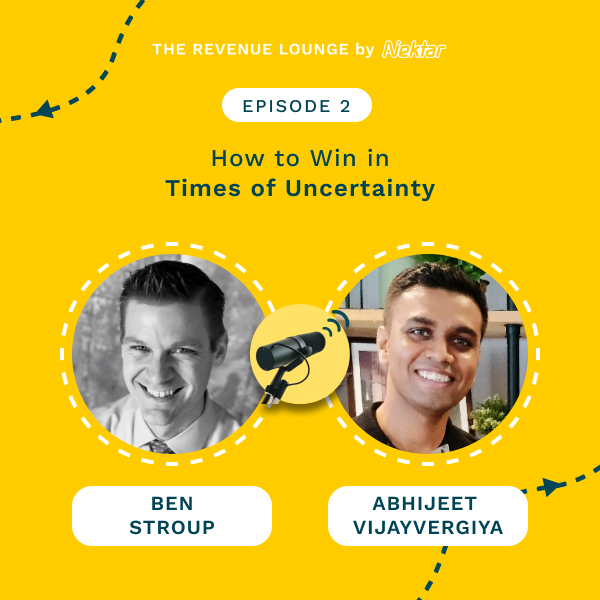
Ep #2: How to Win in Times of Uncertainty
Listen Now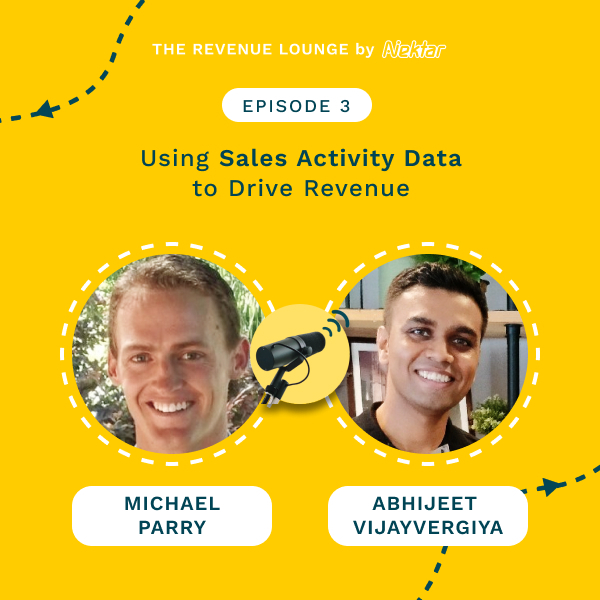
Ep #3: Using Activity Data to Drive Sales Productivity
Listen Now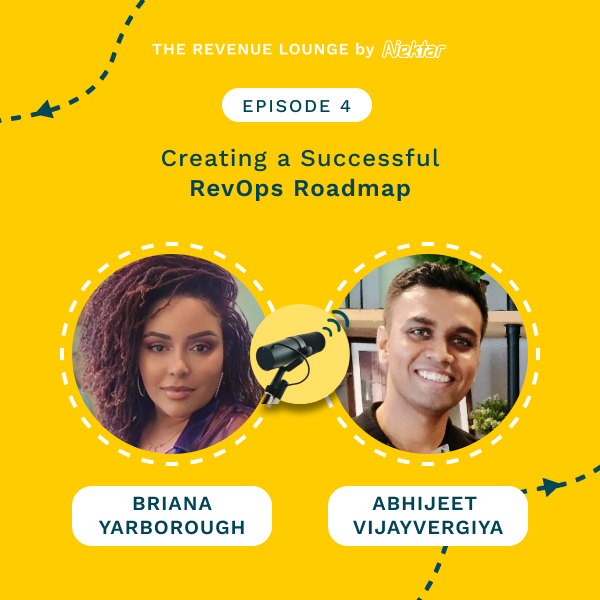
Ep #4: Creating a Successful RevOps Roadmap
Listen Now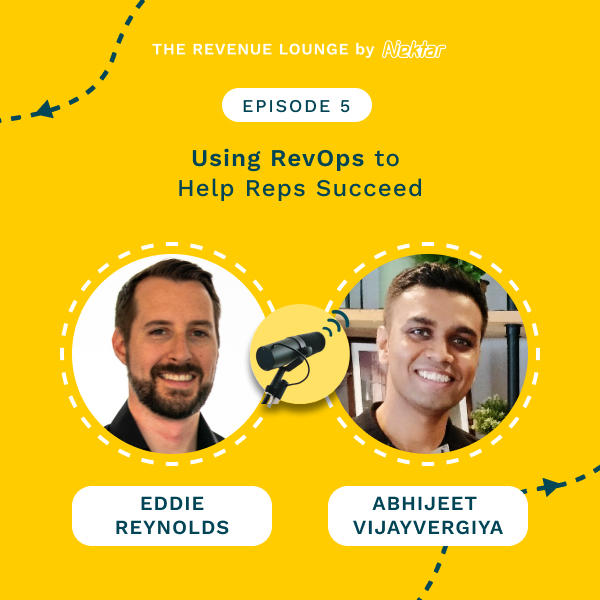
Ep #5: Using RevOps to Help Reps Succeed
Listen Now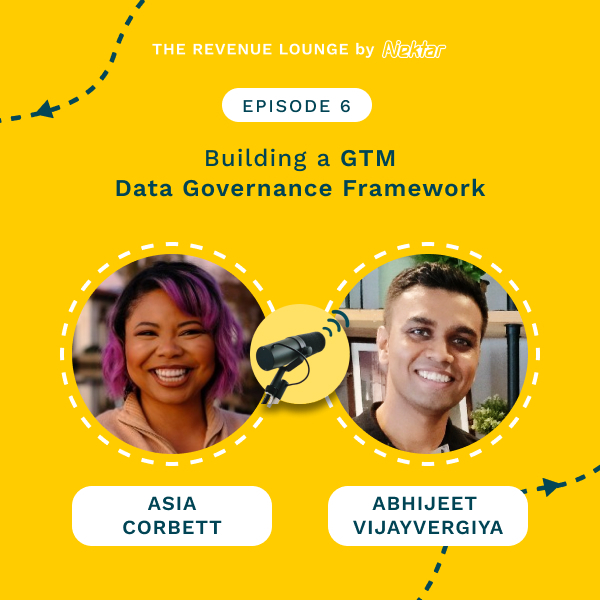
Ep #6: Building a GTM Data Governance Framework
Listen Now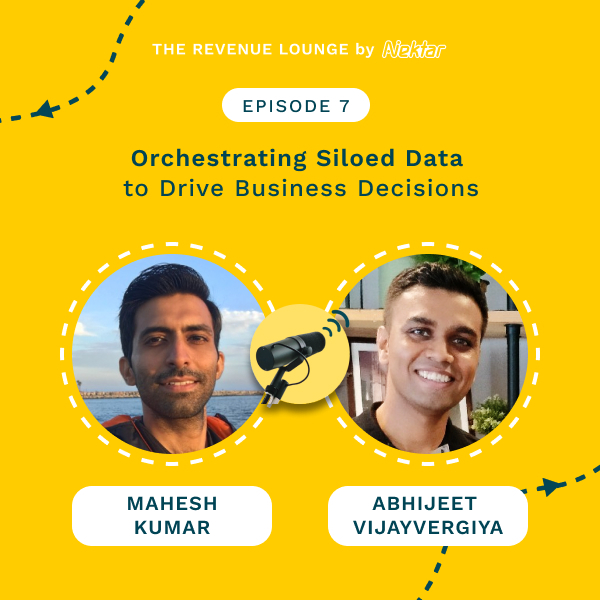
Ep #7: Orchestrating Siloed Data to Drive Business Decisions
Listen Now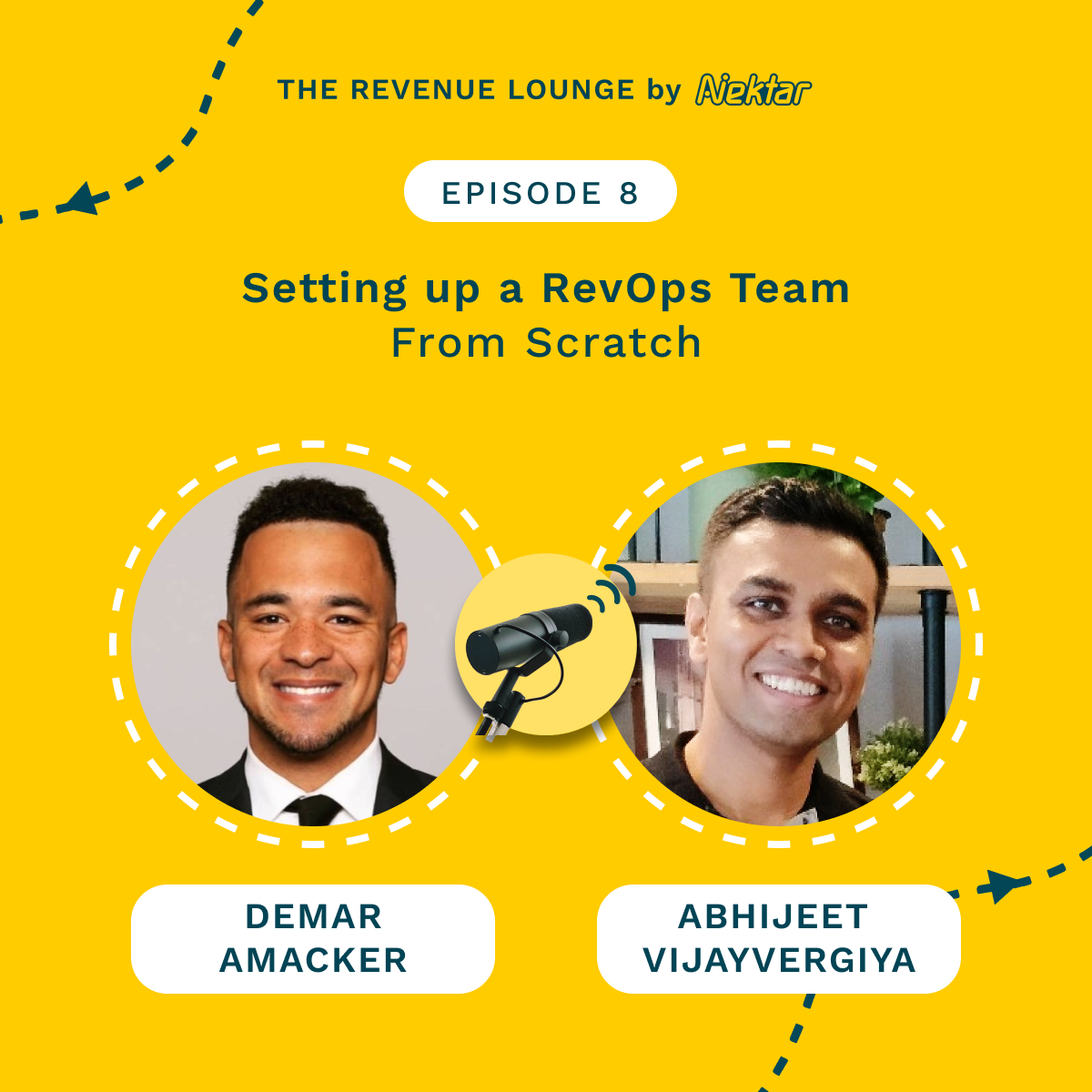
Ep #8: Setting Up a RevOps Team From Scratch
Listen Now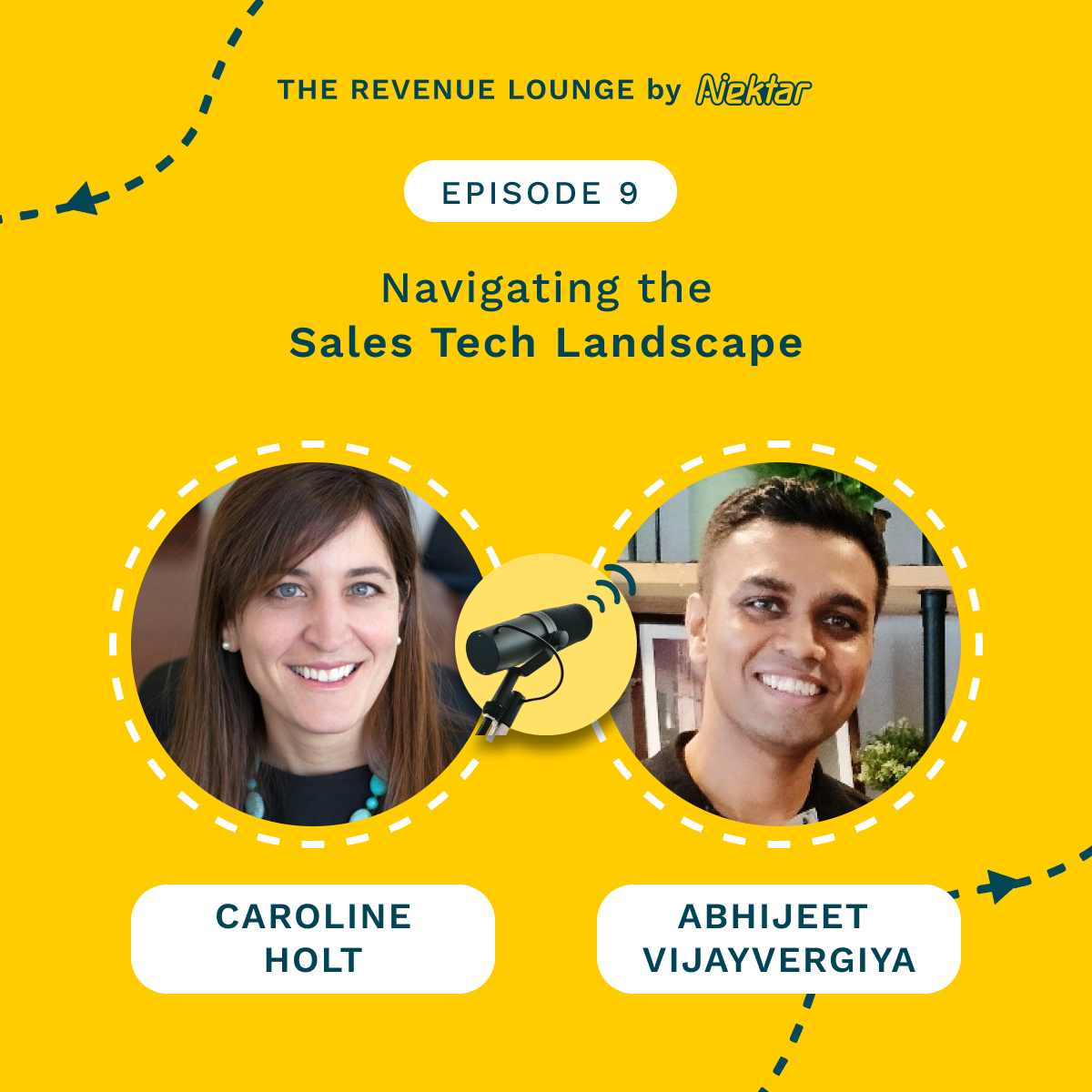
Ep #9: Navigating the Sales Tech Landscape
Listen Now